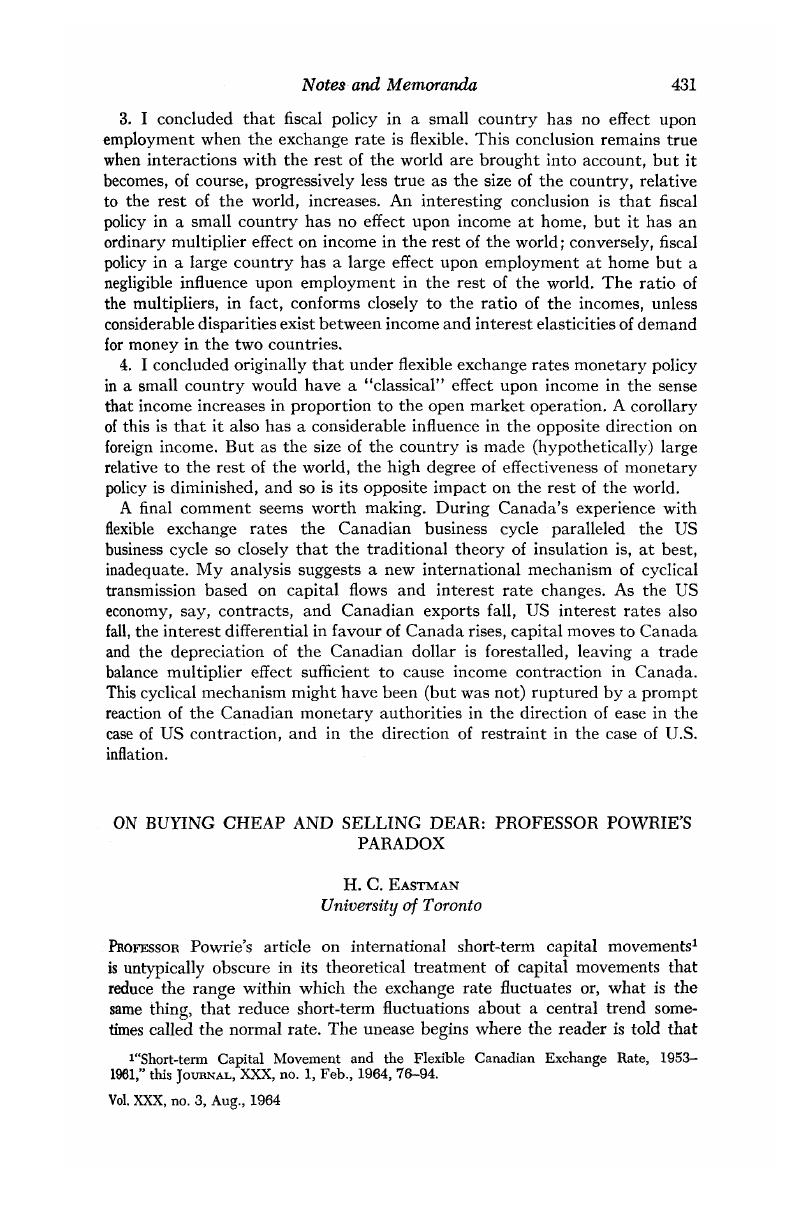No CrossRef data available.
Article contents
On Buying Cheap and Selling Dear: Professor Powrie's Paradox
Published online by Cambridge University Press: 07 November 2014
Abstract

- Type
- Notes and Memoranda
- Information
- Canadian Journal of Economics and Political Science/Revue canadienne de economiques et science politique , Volume 30 , Issue 3 , August 1964 , pp. 431 - 435
- Copyright
- Copyright © Canadian Political Science Association 1964
References
1 “Short-term Capital Movement and the Flexible Canadian Exchange Rate, 1953–1961,” this Journal, XXX, no. 1, Feb., 1964, 76–94.
2 This is proved in Harry C. Eastman and Stefan Stykolt, “Exchange Stabilization Once Again,” ibid., XXIV, no. 2, May, 1958, 268.
3 Let A = A0 sin x
B = B0 sin x
Then C = B 0 sin(x −6), since the maximum value of C is B0; and if this occurs where the curve for C intersects the curve for A, then
θ = (π/2) −sin−1(B 0/A 0)
D = A − B = (A 0 − B 0 ) sin x = D sin x
E = A − C = A0 sin x − B0 sin (x − θ) = E0 sin (x + ψ).
Substituting for θ in the equation for E, and combining the two sine functions into one gives ![]() and ψ = sin−1 (B0/A0).
and ψ = sin−1 (B0/A0).
The ratio of the areas under the half cycles of two sine curves of the same period is the ratio of their amplitudes. Therefore the ratio of the area under a half cycle of E to that under a half cycle of D is
I am indebted for the solution of this problem to my versatile colleague, Professor W. E. Grasham.
4 Harry C. Eastman and Stefan Stykolt, “Exchange Stabilization in Canada, 1950–4”, this Journal, XXII, no. 2, May, 1956.


